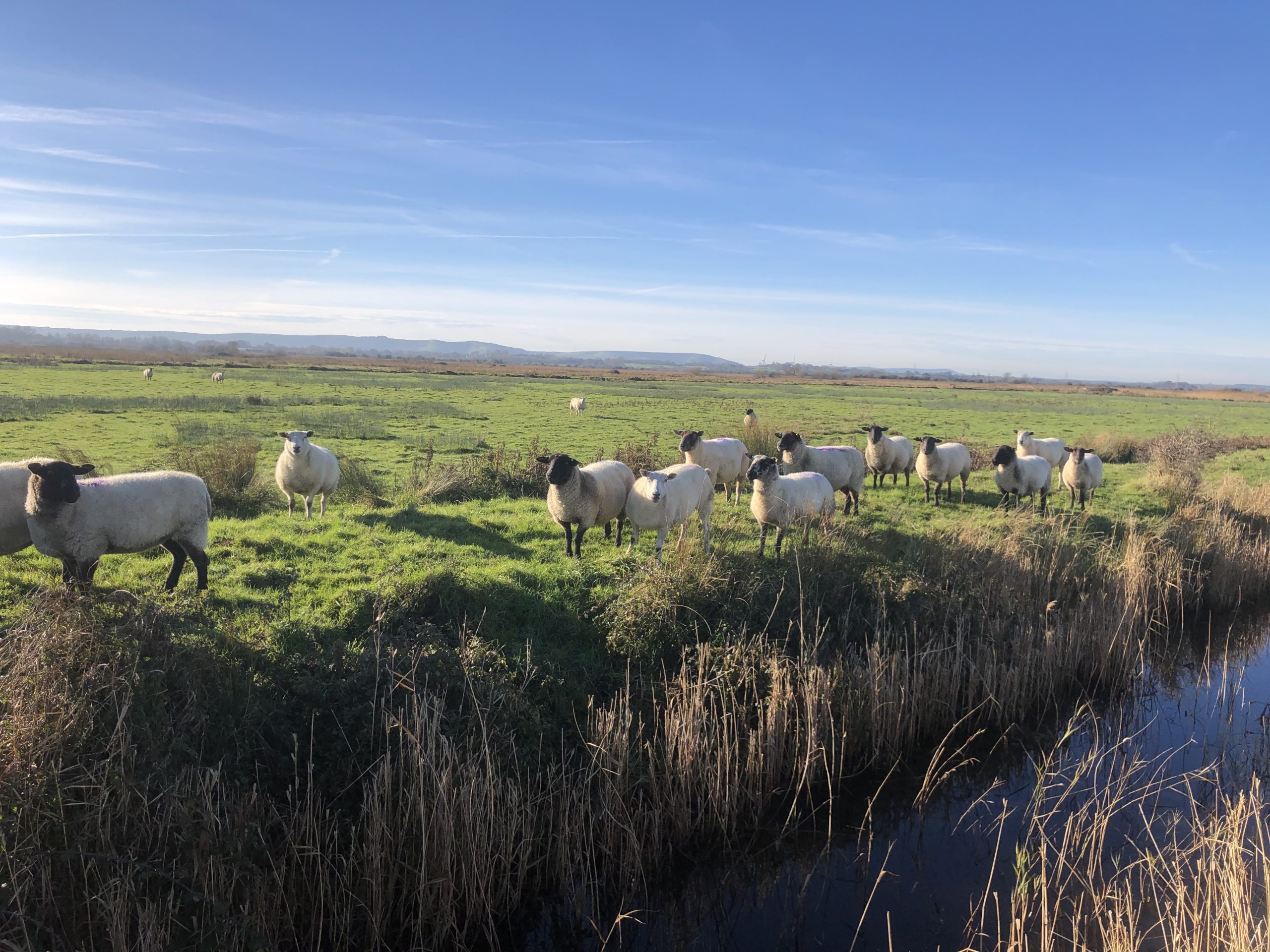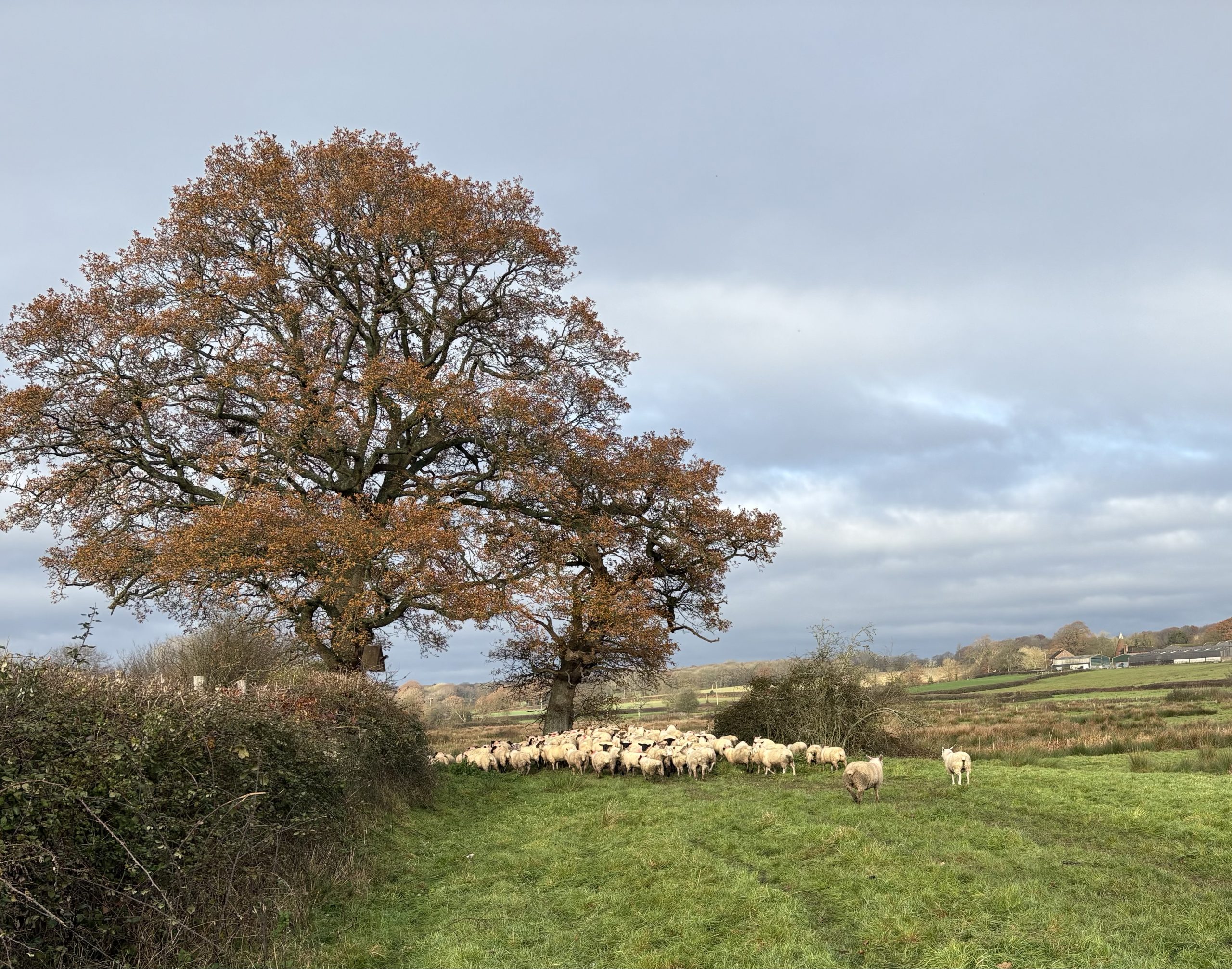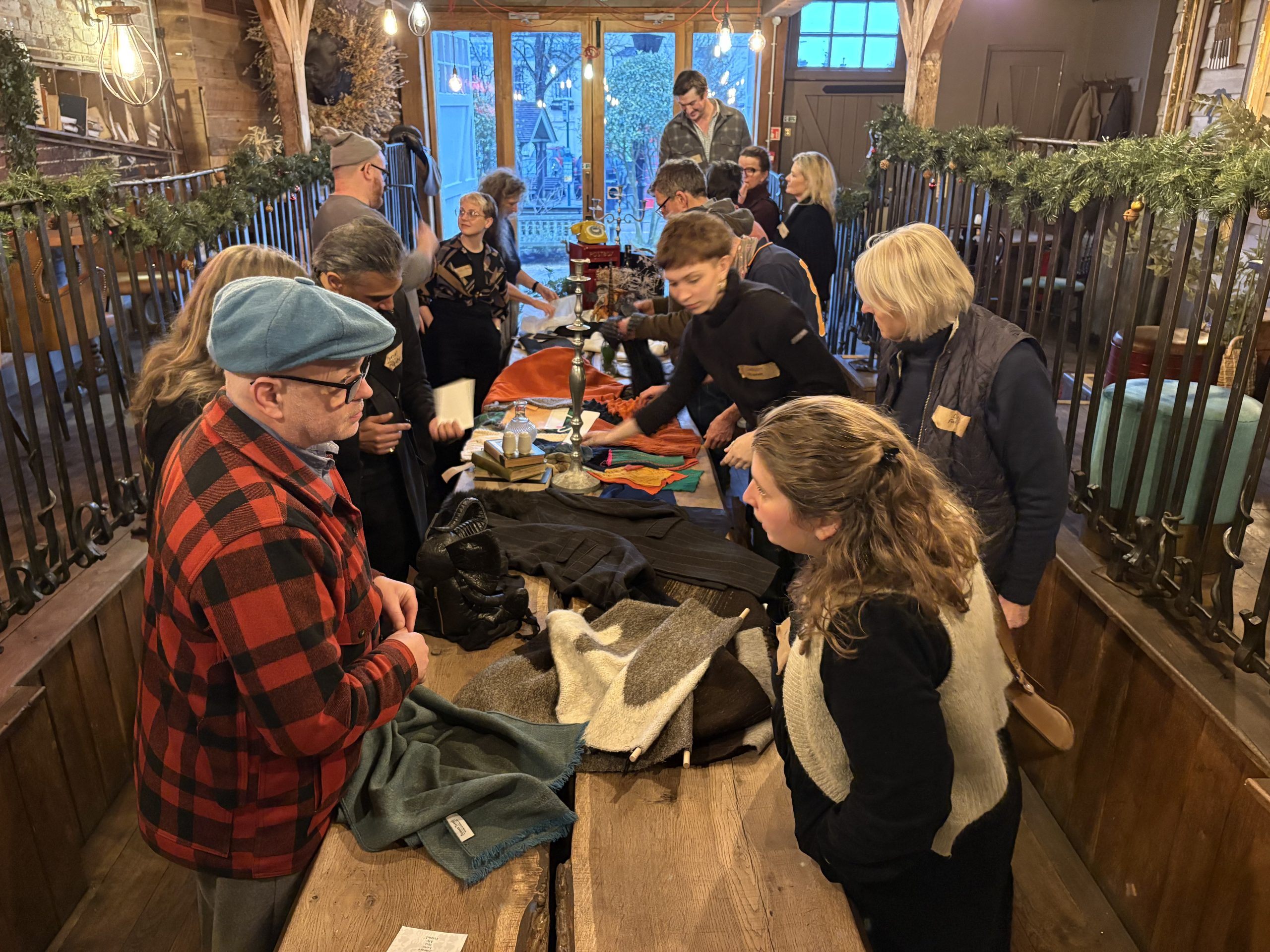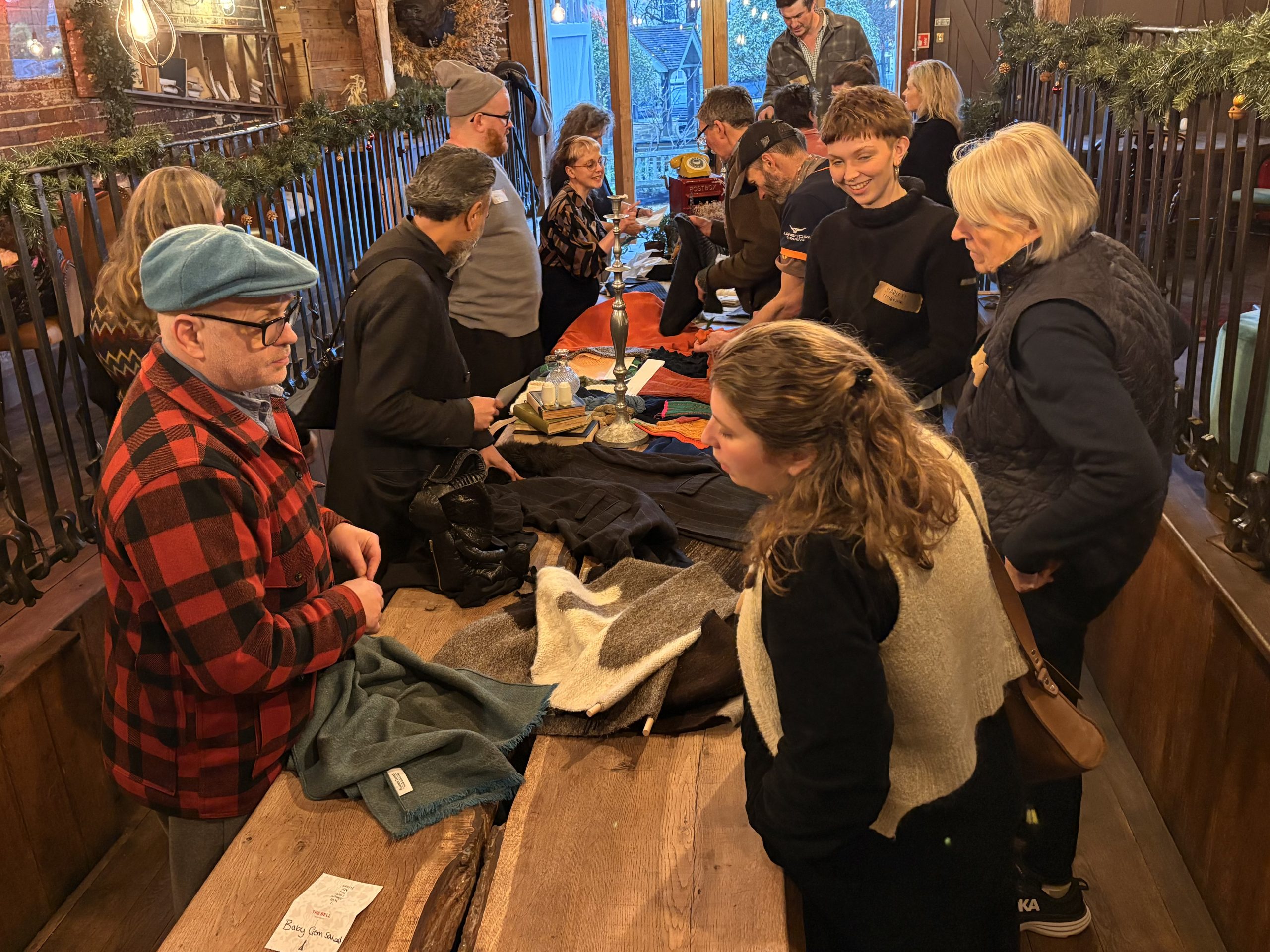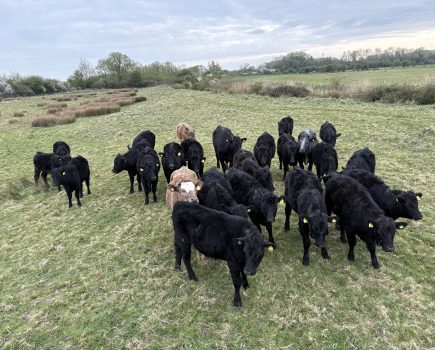The grandchildren had a lot of fun decorating their Christmas trees and there was lots of expectation and excitement around Christmas Day. Preparation is key; let’s not pretend that it isn’t a lot of work, but the reward is seeing those awed and happy faces.
Farming families grow up learning that on Christmas Day the animals still need looking after, checking, feeding, milking etc. In our household, regardless of the weather everyone is bundled outside to help. A sense of purpose and a dose of fresh air work wonders for the appetite. It’s good to have a laugh, but I always reflect on my time working in the NHS. For some, this season can be sad and lonely.
So when the dog tries to eat the turkey, some pigs in blankets end up on the kitchen floor, (as a result of burning myself on the oven door), the sprouts are over cooked, the extra stuffing burnt to a cinder and I can’t find the cranberry sauce – I attempt to keep calm.
One grandchild might be having a meltdown, another urgently needs the potty and the oldest announces they’ve decided to go vegan. When chaos reigns, I try to “count my blessings”, fortified by a sip of cool bubbly – purely for medicinal purposes, you understand. I remind myself that every day is a bonus, Christmas Day being no exception.
Today, strong winds are interspersed by downpours. I prefer it cold and dry with some winter sun. While we can’t choose the weather, we can decide how to prepare for it. For me, wool is indispensable. Woollen socks and jerseys are my go-to for warmth and comfort.
Instead of lamenting the low prices received for our wool, I’m taking a more proactive approach. Rather than demonstrating, I’ve been researching how to achieve better returns for our fleeces, and it’s turned out to be quite enjoyable.
Deborah Barker, a director of South East England Fibreshed, recently invited me to a farmer/designer meet up. It was a chance to connect, share challenges and explore opportunities with South East arts and fashion designers interested in working with local wool.
We gathered at The Bell in Ticehurst. Upon arrival we were asked to write a label indicating our category – farmer or designer – and our name. Then we were divided, 11 farmers standing on one side of a long table, 11 designers on the other. What followed felt like speed dating. At the ring of a bell, we had one minute each to talk. Two dings meant time was up and the designers rotated to the next farmer.
Many designers handed out contact cards, which was helpful, though, predictably, the farmers were less organised. Some farmers brought in samples of fleeces or wool products they had experimented with, while the designers showcased an array of creations incorporating wool. These ranged from coats and bags to scarves and knitted samples that demonstrated the variety of textures and styles achieved with various types of wool.
It was fascinating to learn how these different products are made, but what stood out most was the designers’ genuine enthusiasm for collaborating with farmers. Their goal is to ensure that the final products are fully traceable.
I didn’t have a fleece as we had sent ours to the wool board, but I did take a hand-knitted jersey that my mother made 35 years ago. When my parents retired from farming, they moved to a small cottage in Shropshire with a single field attached. My mother kept a handful of pedigree Shetland sheep and a couple of Jacobs. She joined the Guild of Spinners, processed her fleeces and spun and knitted countless creations. She even made each of our five children a custom-designed jersey.
At the time, I probably didn’t appreciate the effort that went into her work, but I recently rediscovered one of those jerseys and took it along to show. I still wear her knitted neck scarves, which are cosy and small enough to tuck into a pocket when you warm up.
Looking ahead, we’re exploring a commercial flatbed knitting machine, with which we can create blankets, throws, hats and the like. The aim is to work with fashion designers and farmers from the High Weald and surrounding areas to add value to their wool. Anyone interested in this initiative can find out more by emailing southeastfibreshed@gmail.com
In other farm news, the spring calving cows are about to be weaned, so we are expecting some noisy days and nights while they adjust. The autumn calving cows are due to start shortly.
Our Farming Equipment and Technology Fund grant-funded equipment is now fully operational. This includes a scoop attachment for the cattle handling system, roller gale-breakers installed above both gates into the cattle shed and fixed brushes within the shed. Electric fencing is being used to divide fields and prevent livestock from drowning in rivers. We need to take photos and submit forms, with fingers crossed that everything is in order so our funding is approved.
We ventured into Hailsham market to admire the stock at the 182nd Fatstock Show. Congratulations to all the winners, as we know a lot of hard work goes into preparing these animals for this event.
A special mention goes to Snowfields Academy, a school for 11 to 18 year-olds with a farm attached; they did exceptionally well. We could do with more schools like this. The show brought together many from the rural community and it was good to catch up with familiar faces.
I’m planning to get some finished lambs into market in the new year. I’m pleased that both beef and lamb prices are holding up well, and rightly so if farmers are to stay in business. An update on Saffron (my poorly lamb); she made a full recovery. Yippee.
This autumn we were late putting our tups in with our ewes, but it looks like their work is done. When I checked our lambing start date, it came up as Easter Day; oops, looks like we’ll be hunting lambs not eggs this Easter. A bit of chocolate might still come in handy, though.
Hoping you all enjoyed a merry Christmas and will have a happy, healthy, prosperous new year.
- Decorating the Christmas tree
- Making Christmas biscuits
- Showing our tree to grandma
- Lambs heading home
- Ewes on the Pevensey levels
- Winter grazing
- Hailsham Fatstock Show
- Hailsham Fatstock Show
- Looking at designers’ samples using wool
- Meeting up with designers
- Fibreshed book linking fashion and wool







